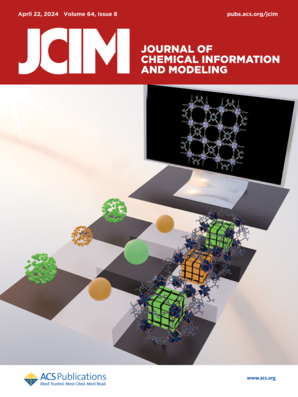Exploring Structural Requirements for Sigma-1 Receptor Linear Ligands: Experimental and Computational Approaches
IF 5.6
2区 化学
Q1 CHEMISTRY, MEDICINAL
引用次数: 0
Abstract
Sigma-1 receptor (S1R) is involved in a large array of biological functions due to its ability to interact with various proteins and ion channels. Crystal structures of human S1R revealed the trimeric organization for which each protomer comprises the ligand binding pocket. This study applied a multistep computational procedure to develop a pharmacophore model obtained from molecular dynamics simulations of available cocrystal structures of well-known S1R ligands. Apart from the well-established positive ionizable and hydrophobic features, the obtained model included an additional specific hydrophobic feature and different excluded volumes, thus increasing the selectivity of the model as well as a more detailed determination of the distance between two essential features. The obtained pharmacophore model passed the validation test by receiver operating characteristic (ROC) curve analysis of active and inactive S1R ligands. Finally, the pharmacophoric performance was experimentally investigated through the synthesis and binding assay of new 4-phenylpiperazine-based compounds. The most active new ligand 2-(3-methyl-1-piperidyl)-1-(4-phenylpiperazin-1-yl)ethanone (3) showed an S1R affinity close to the reference compound haloperidol (Ki values of 4.8 and 2.6 nM, respectively). The proposed pharmacophore model can represent a useful tool to design and discover new potent S1R ligands.

探索 Sigma-1 受体线性配体的结构要求:实验和计算方法
Sigma-1 受体(S1R)能够与各种蛋白质和离子通道相互作用,因此参与了大量的生物功能。人类 S1R 的晶体结构揭示了三聚体组织,其中每个原体都是配体结合口袋。本研究采用了一个多步骤计算程序,通过对现有的著名 S1R 配体共晶体结构进行分子动力学模拟,建立了一个药理模型。除了公认的正电离和疏水特征外,所获得的模型还包括一个额外的特定疏水特征和不同的排除体积,从而提高了模型的选择性,并更详细地确定了两个基本特征之间的距离。通过对活性和非活性 S1R 配体进行接收器操作特征曲线(ROC)分析,所获得的药效模型通过了验证测试。最后,通过合成和结合测定新的 4-苯基哌嗪基化合物,对其药效性能进行了实验研究。活性最强的新配体 2-(3-甲基-1-哌啶基)-1-(4-苯基哌嗪-1-基)乙酮(3)的 S1R 亲和力接近参考化合物氟哌啶醇(Ki 值分别为 4.8 和 2.6 nM)。所提出的药理模型是设计和发现新的强效 S1R 配体的有用工具。
本文章由计算机程序翻译,如有差异,请以英文原文为准。
求助全文
约1分钟内获得全文
求助全文
来源期刊
CiteScore
9.80
自引率
10.70%
发文量
529
审稿时长
1.4 months
期刊介绍:
The Journal of Chemical Information and Modeling publishes papers reporting new methodology and/or important applications in the fields of chemical informatics and molecular modeling. Specific topics include the representation and computer-based searching of chemical databases, molecular modeling, computer-aided molecular design of new materials, catalysts, or ligands, development of new computational methods or efficient algorithms for chemical software, and biopharmaceutical chemistry including analyses of biological activity and other issues related to drug discovery.
Astute chemists, computer scientists, and information specialists look to this monthly’s insightful research studies, programming innovations, and software reviews to keep current with advances in this integral, multidisciplinary field.
As a subscriber you’ll stay abreast of database search systems, use of graph theory in chemical problems, substructure search systems, pattern recognition and clustering, analysis of chemical and physical data, molecular modeling, graphics and natural language interfaces, bibliometric and citation analysis, and synthesis design and reactions databases.

 求助内容:
求助内容: 应助结果提醒方式:
应助结果提醒方式:


